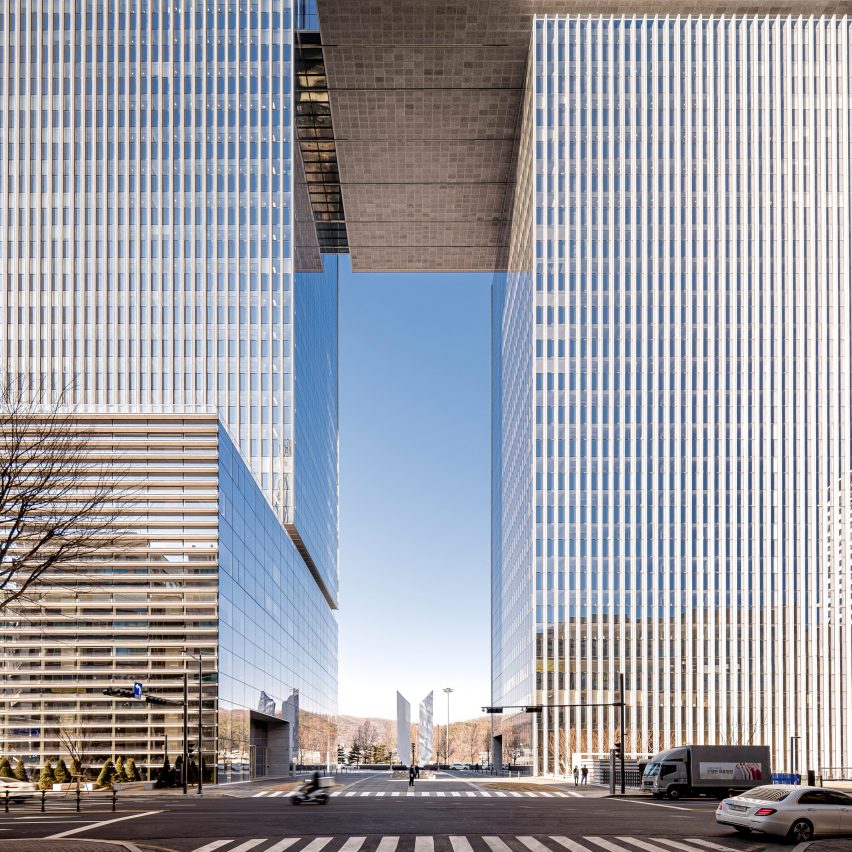
Kohn Pedersen Fox has completed the Bundang Doosan Tower, which consists of two 27-storey towers connected by a sky bridge and sits next to a highway that leads to Seoul in South Korea.
Built as the headquarters for South Korean conglomerate the Doosan Corporation, the 130-metre high building stands alongside a toll gate on the Gyeongbu Expressway leading to Seoul.
Kohn Pedersen Fox‘s design for the block was informed by the shape of Seoul’s historic city gates.
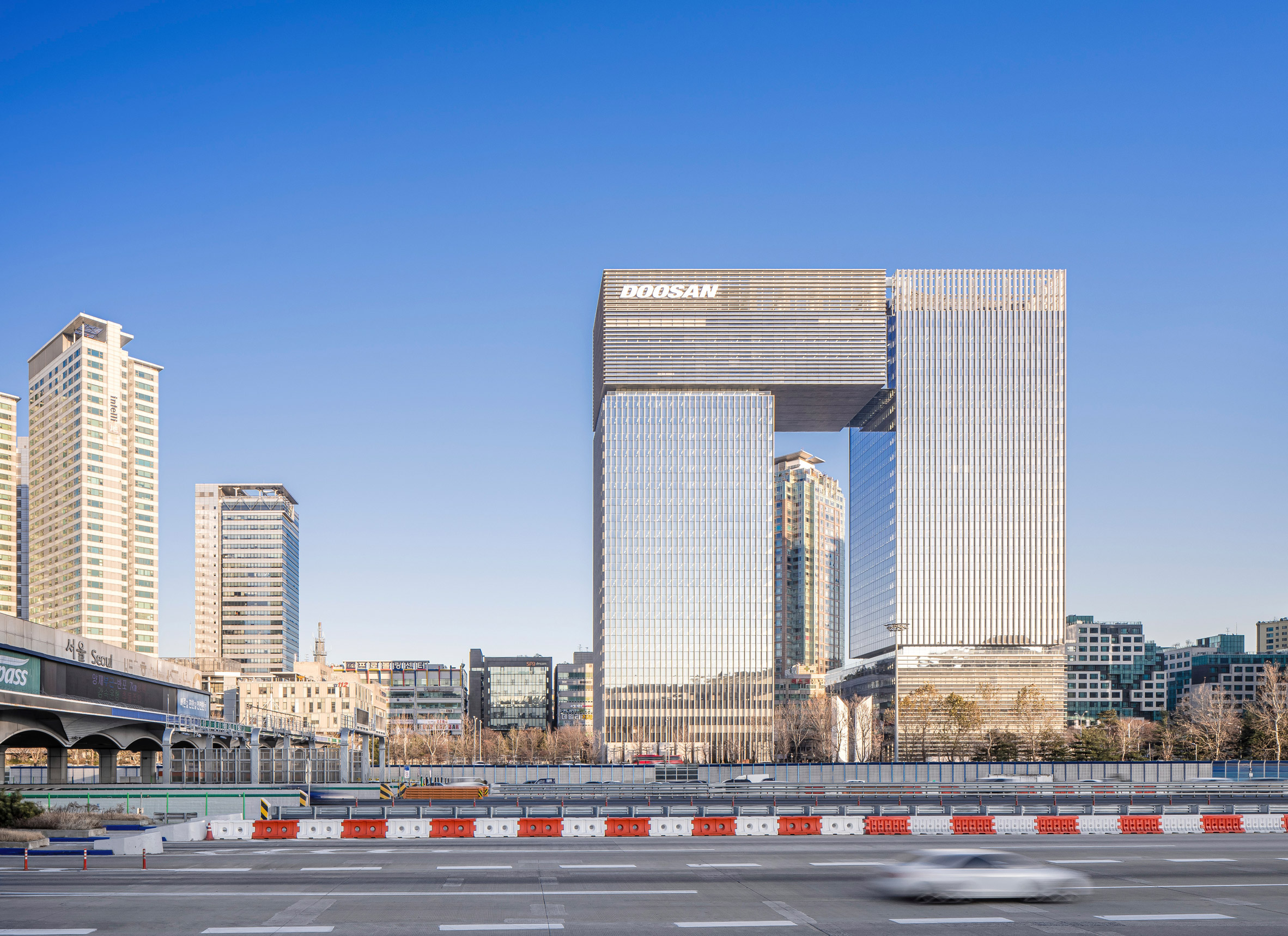
“Fronting the major highway, Bundang Doosan Tower stands at a significant gateway connecting Seoul to the rest of the country,” said Kohn Pedersen Fox design director Brian Chung.
“The gateway design becomes a visual marker for about 1.2 million daily drivers who would be entering and leaving the city,” he told Dezeen.
“It has been designed with the old city gate, Sungnyemun – one of the eight gates in the fortress wall of old Seoul – in mind, which was considered the main portal in and out of the city since the 14th century.”
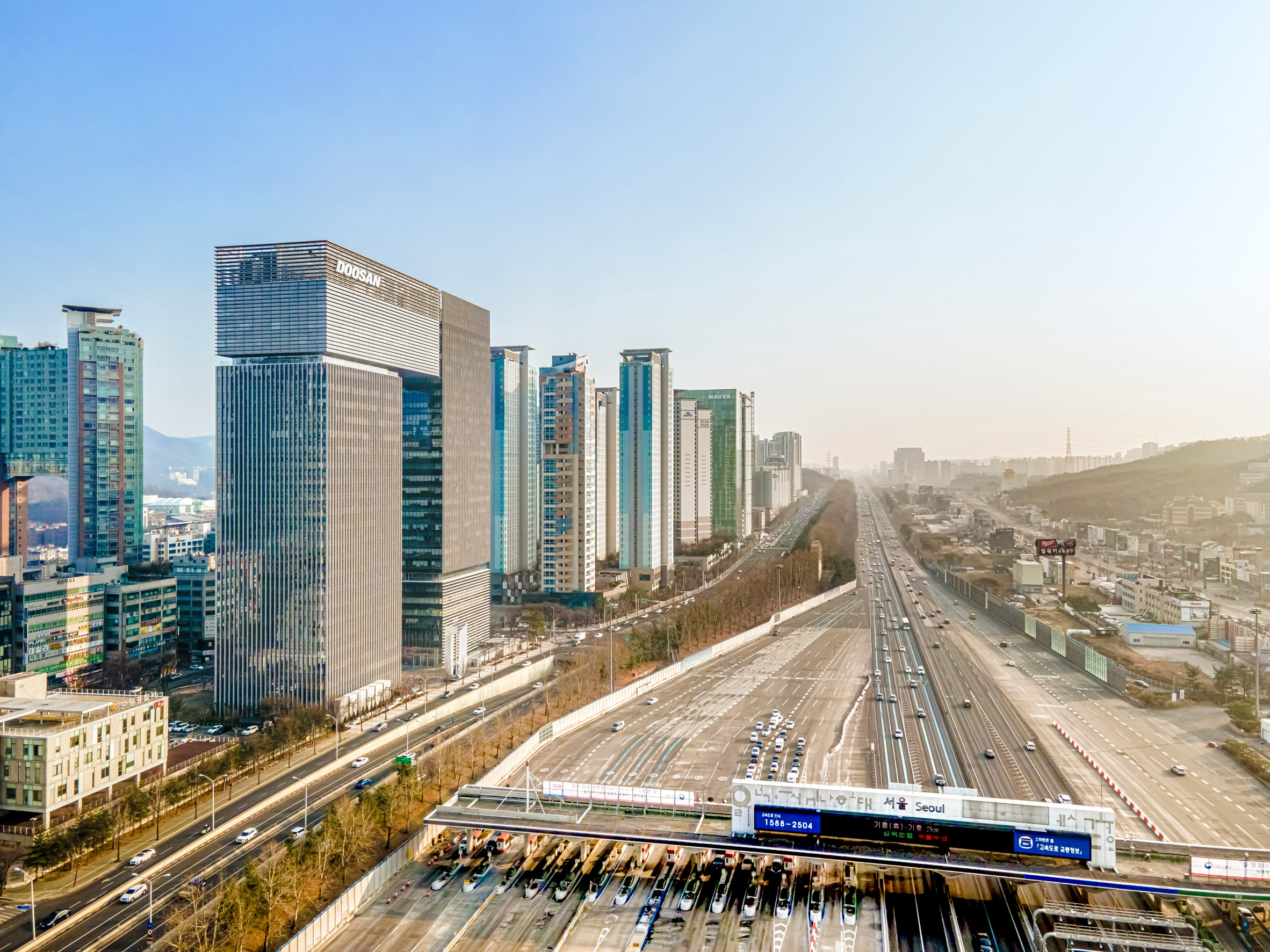
The 100-metre-tall headquarters building consists of two office towers connected by a four-storey high sky bridge.
In total, the headquaters contains 83,000 square meters of office space along with an auditorium, employee daycare, fitness centre, cafe and museum dedicated to Doosan’s history.
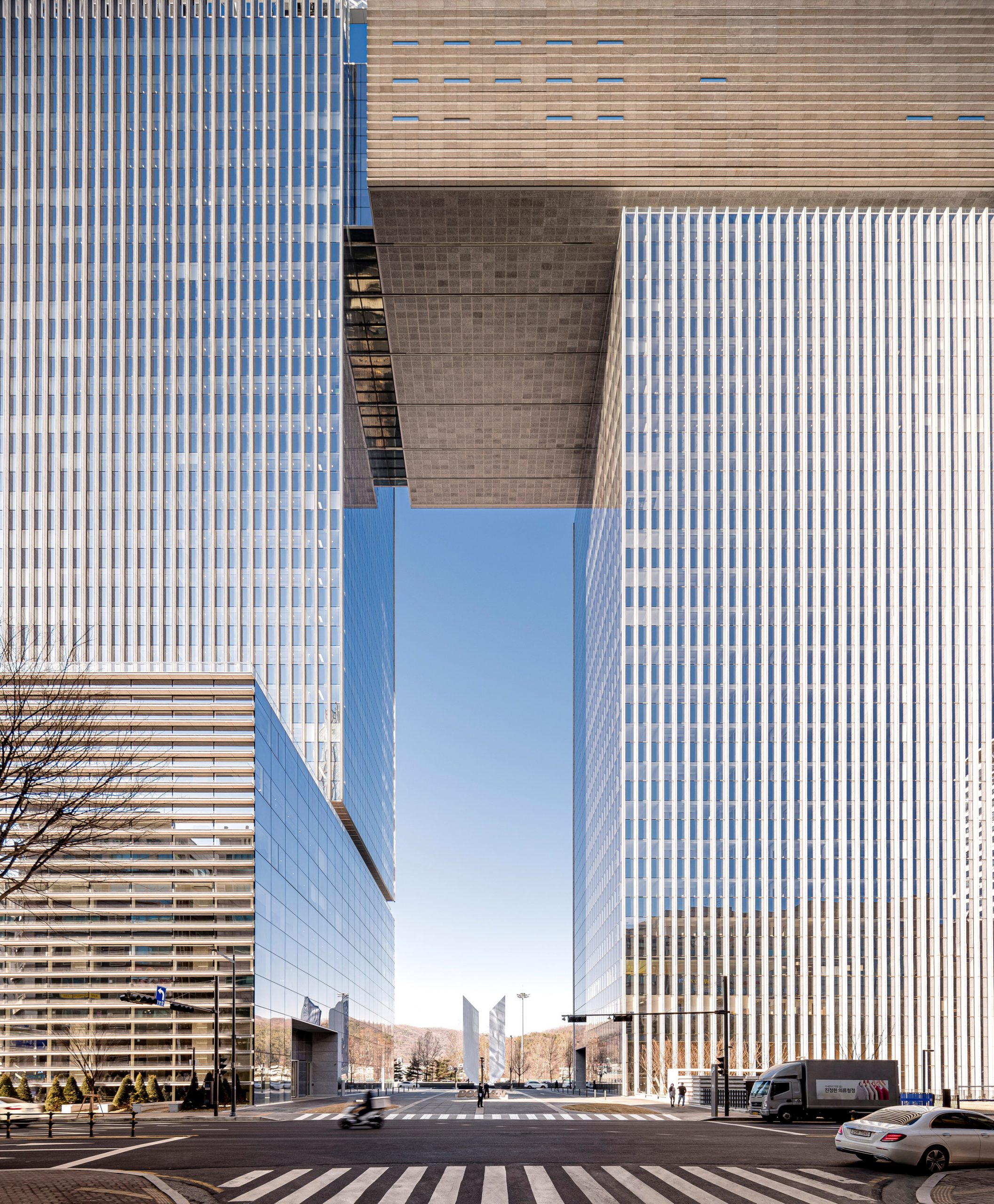
Kohn Pedersen Fox designed the building’s distinct form so that it would be immediately recognisable and would communicate some of the company’s values.
“The design strives for rational simplicity while being highly expressive and impactful,” explained Chung.
“By using office building masses to define a large rectangular void, the composition affords striking views from the highway,” he continued.
“The architecture conveys qualities of solidity and strength, and by organizing itself around a central space, it also communicates the value of community.”
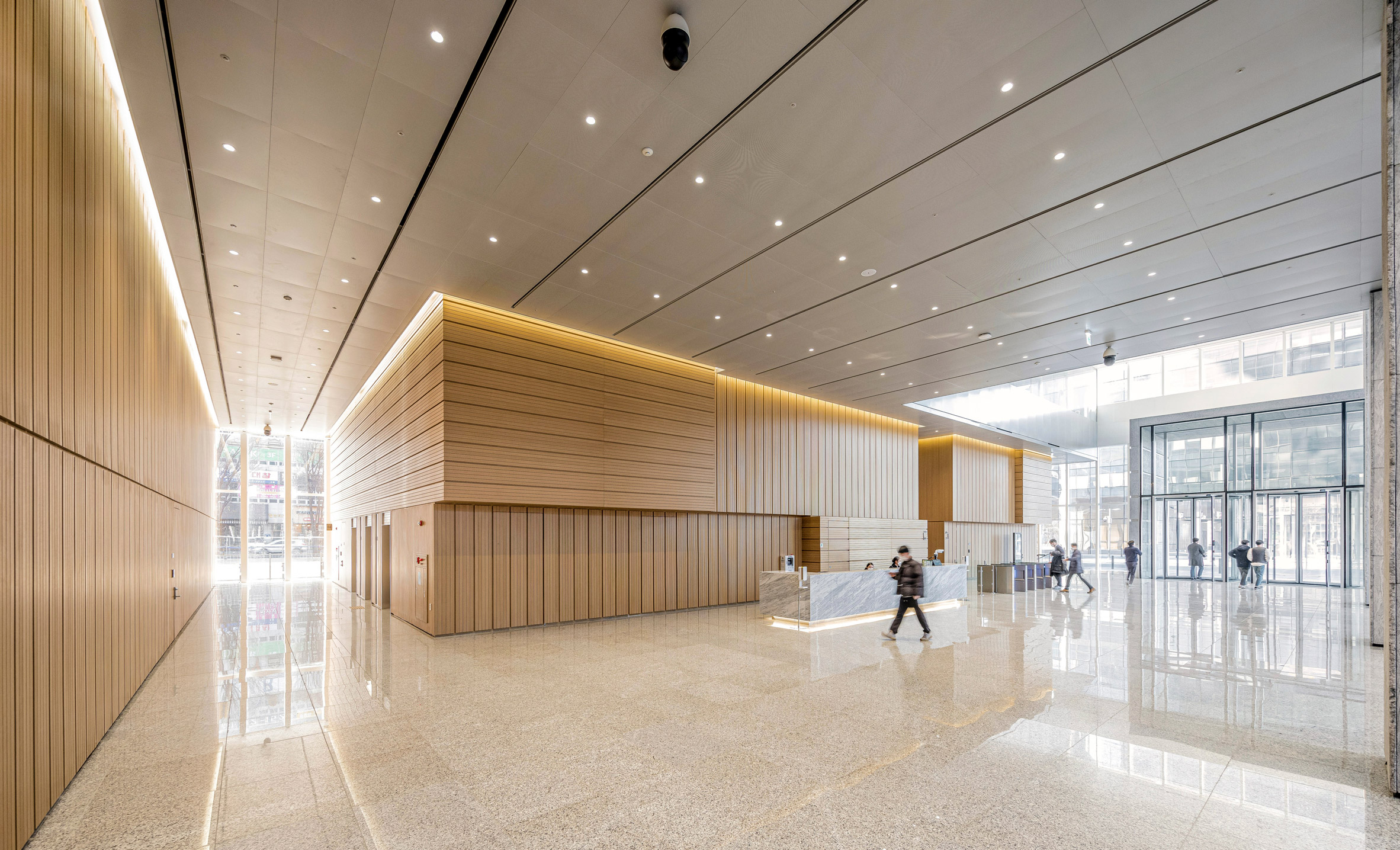
The form also created a variety of different-sized offices that could be used by the affiliates owned by the Doosan Corporation.
At the top of the building, the offices in the skybridge are arranged around a large atrium with stepped seating that was designed to be a space where teams can meet and collaborate.
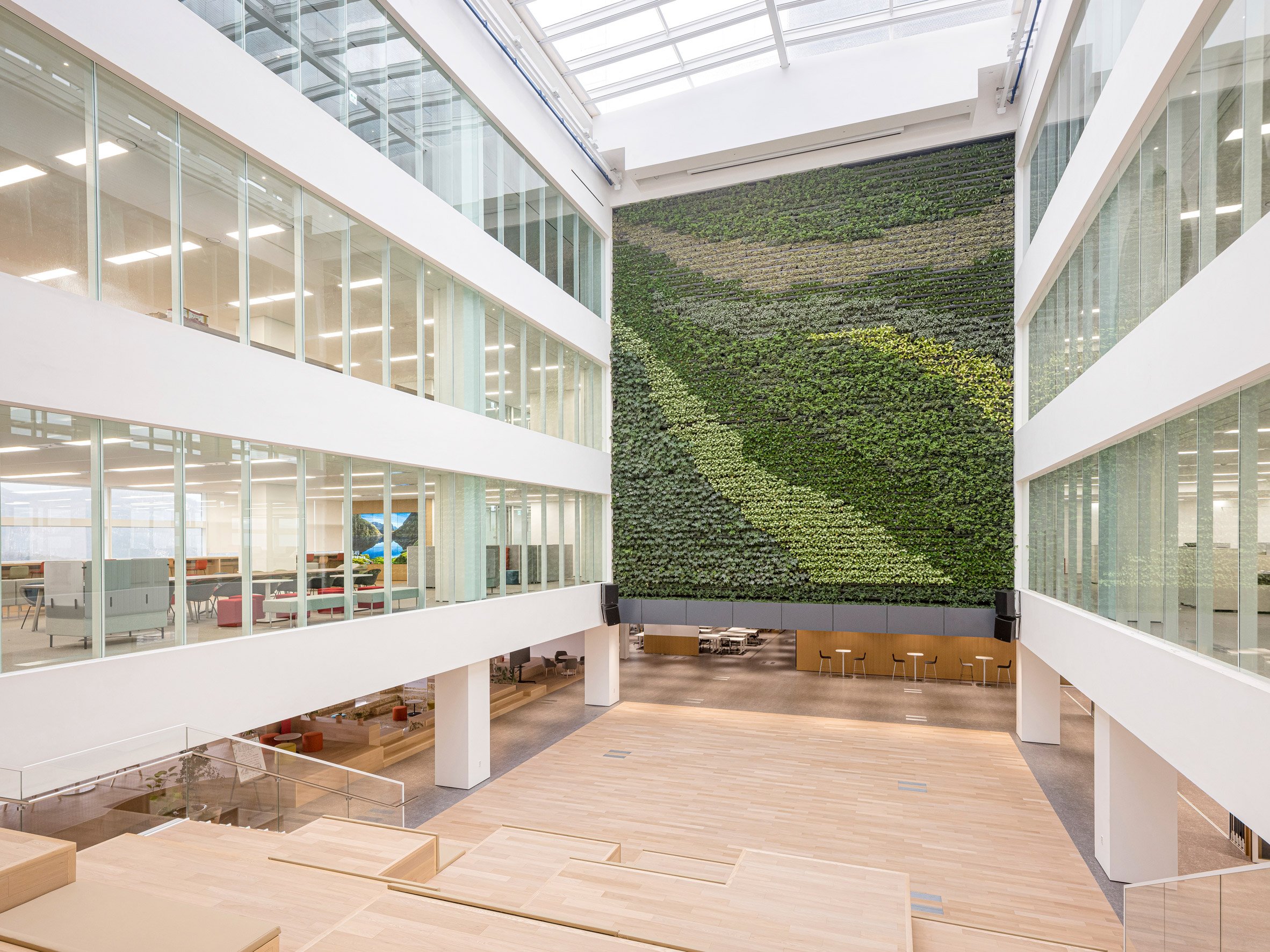
“The brief had asked for a building that could house a number of their own major affiliates, reserving some level of individuality yet, to be well connected for frequent collaborations,” said Chung.
“The skybridge signifies a place of meeting and collaboration. It is about sharing knowledge and information. It also offers various experiences compared to what a communal space within a typical office layout might offer.”
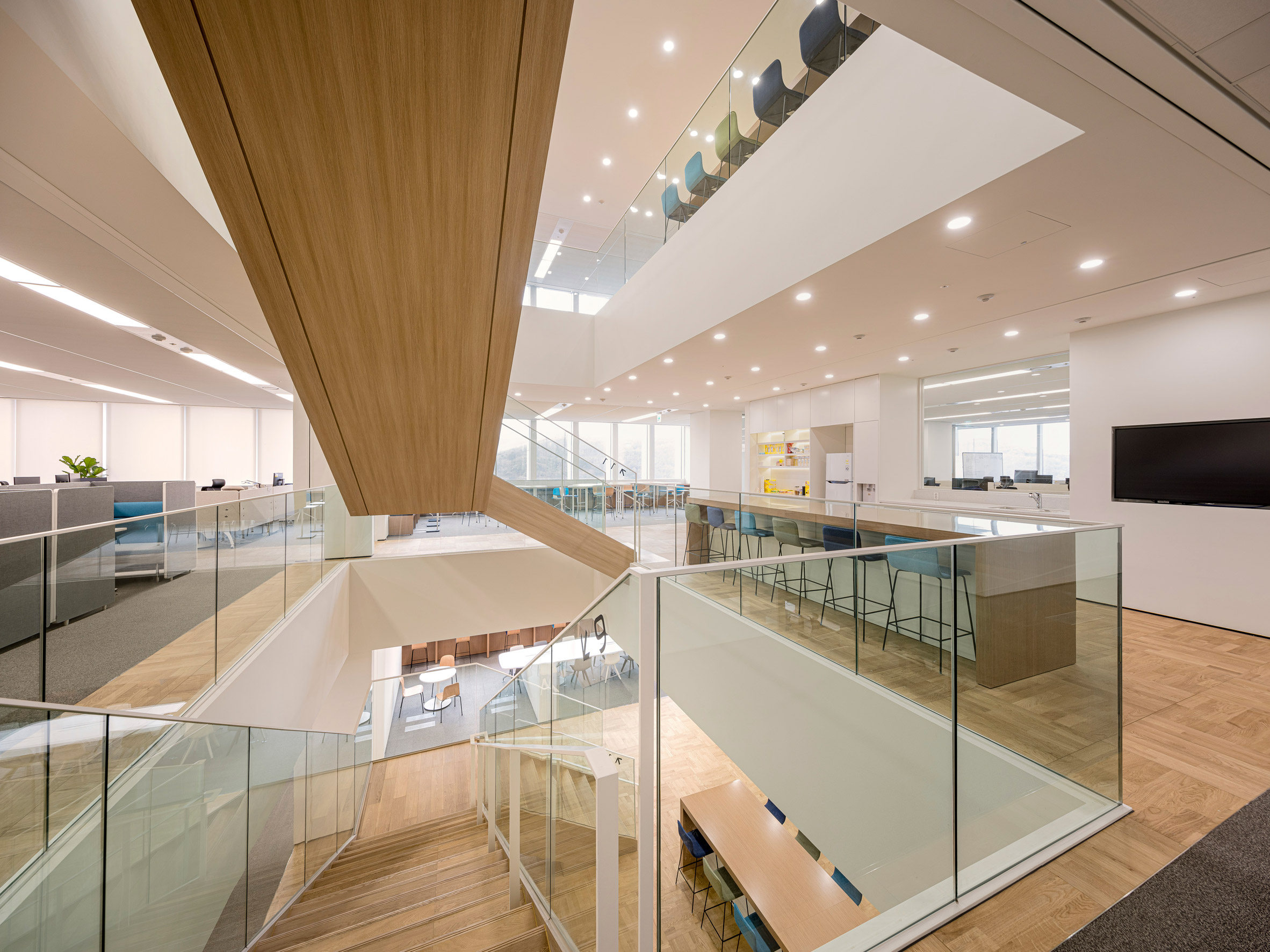
Chung hopes that people passing on the highway will be reassured by the presence of the modern gateway-shaped office block.
“As the building expresses itself as a gateway and as a cyclical form through its pinwheel massing arrangements, one would be able to sense the dynamism and continuity,” he said.
“And perhaps a sense of comfort knowing that the building will always stand to welcome all who would pass through the gateway.”
Kohn Pedersen Fox is an international architecture studio founded in 1976 by William Pedersen, Eugene Kohn and Sheldon Fox.
It has designed numerous skyscrapers including the 555-metre-high Lotte World Tower, which is the tallest building in South Korea, the 190-metre-tall Scalpel skyscraper in London and the tallest skyscraper in Beijing.
The post Kohn Pedersen Fox creates skyscraper as gateway to Seoul appeared first on Dezeen.
